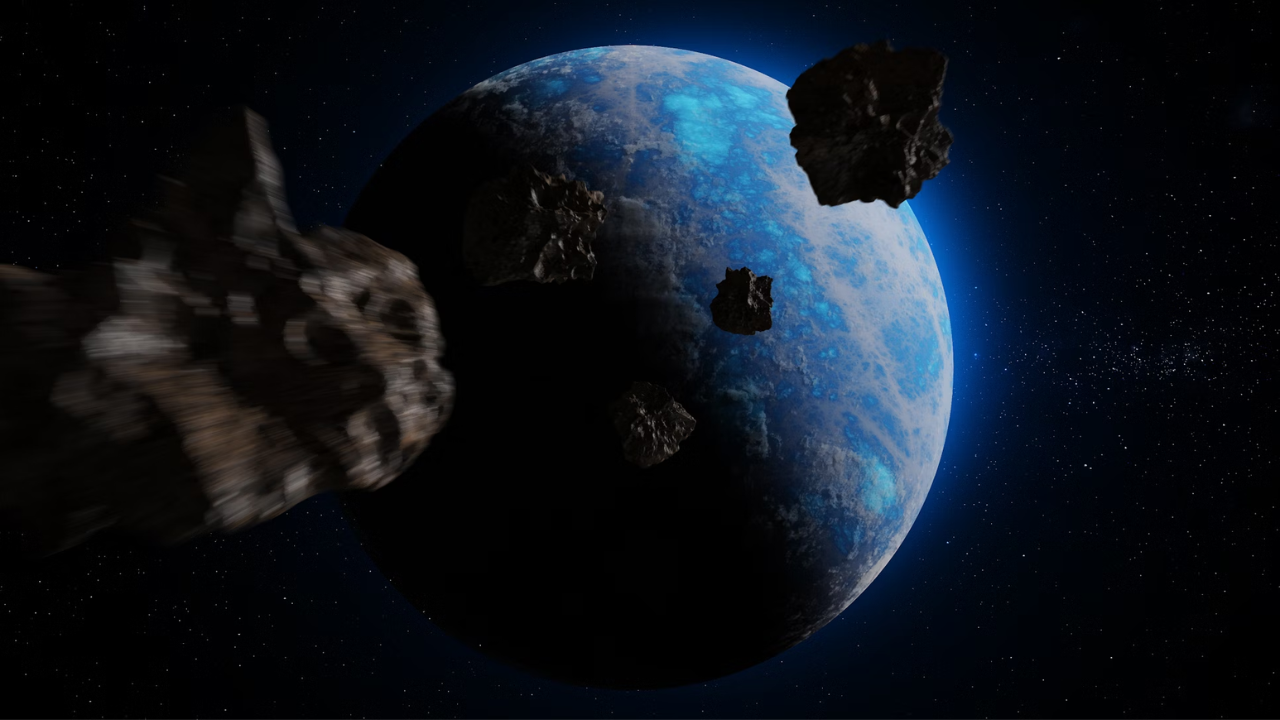Three asteroids are closing towards Earth today at alarming speeds.
In a cosmic spectacle, three big asteroids are hurtling through space towards Earth, sparking questions about potential impacts and the safety of our planet. NASA, the renowned space agency, has stepped forward to provide crucial insights into these celestial visitors, shedding light on their trajectories and the potential risks they pose.
First in line is Asteroid 2024 JQ12, classified as an Amor type asteroid. It measures a modest 24 feet (7.24 metres) across, zipping through space at an astonishing speed of 10,661 kilometres per hour. Scheduled for its closest approach to Earth on May 13, 2024, at 11:18 UTC, it will still maintain a safe distance of 1.8 million kilometres from our planet.
Next up is Asteroid 2024 JB2, categorised as an Apollo type asteroid. This rocky behemoth dwarfs its predecessor, boasting a size of 263 feet (80.27 metres) in diameter. Racing through the cosmos at an impressive speed of 63,793 kilometres per hour, it’s set to make its closest approach to Earth on the same day, May 13, 2024, at 04:53 UTC. However, worry not, as it will remain a comfortable 4.4 million kilometres away from our home world.
Lastly, we have Asteroid 2024 JP10, another member of the Apollo family. This formidable space rock measures 226 feet (68.86 meters) in size, cruising through space at a breathtaking speed of 91,167 kilometres per hour. Its closest approach to Earth is slated for May 13, 2024, at 23:12 UTC, but it will maintain a safe distance of 7.2 million kilometres from our planet.
NASA emphasises that while these asteroids are indeed massive, they do not meet the criteria of potentially hazardous asteroids. Potentially hazardous asteroids are those larger than approximately 460 feet (140 metres) with orbits that bring them within 4.6 million miles (7.5 million kilometres) of Earth’s orbit around the Sun. These three asteroids, while notable, do not pose a direct threat to our planet.
The data on the orbital positions of near-Earth objects comes from the globally recognised Minor Planet Center, with contributions from observatories worldwide, including both professional and amateur astronomers. NASA’s continuous monitoring efforts, supported by observatories like Pan-STARRS, the Catalina Sky Survey, and the NEOWISE mission, play a crucial role in assessing any potential impact risks posed by near-Earth objects.
While the sight of these asteroids racing through space may evoke curiosity and wonder, NASA assures us that our planet is not in danger.



:max_bytes(150000):strip_icc()/GettyImages-2163516148-331b6190765d49ef8d71bf48ba233e02.jpg)
